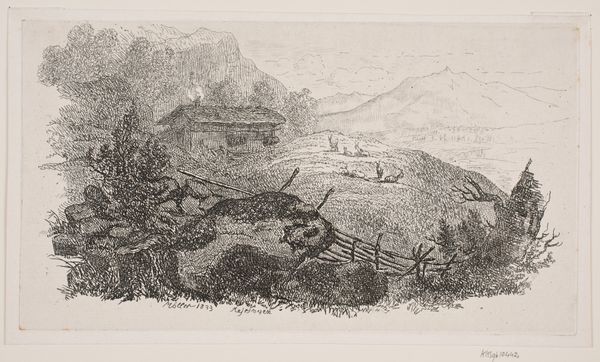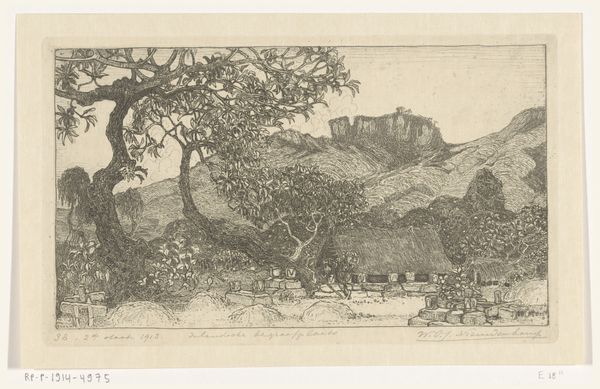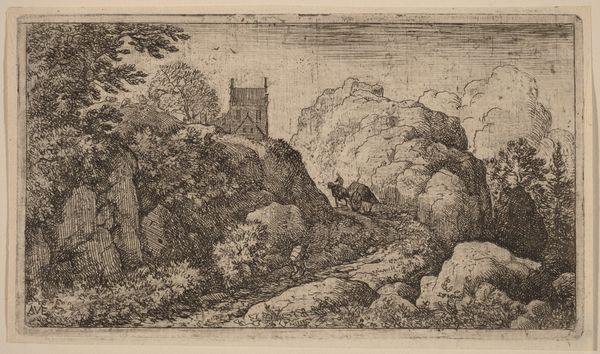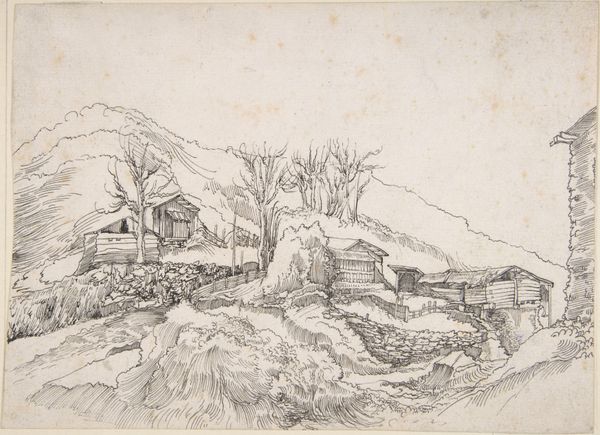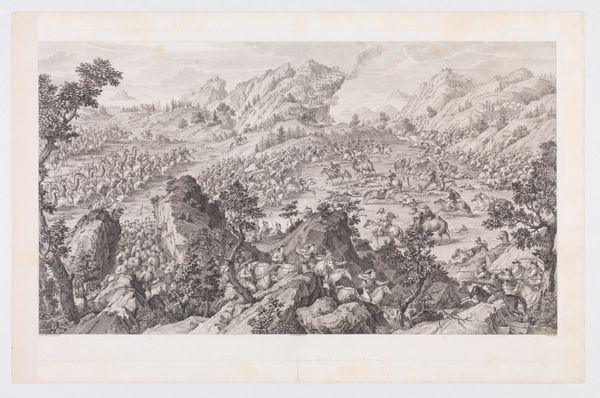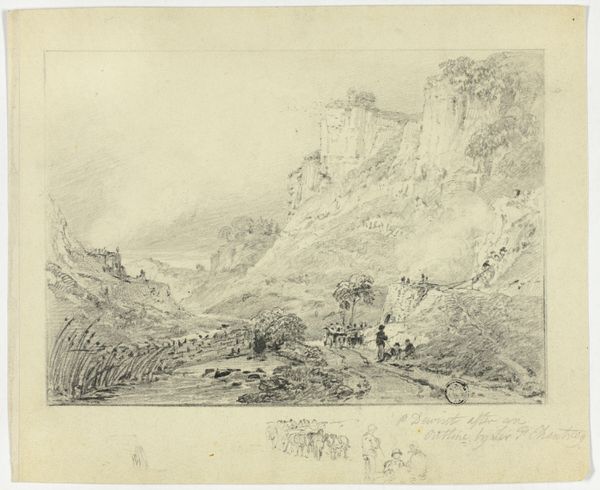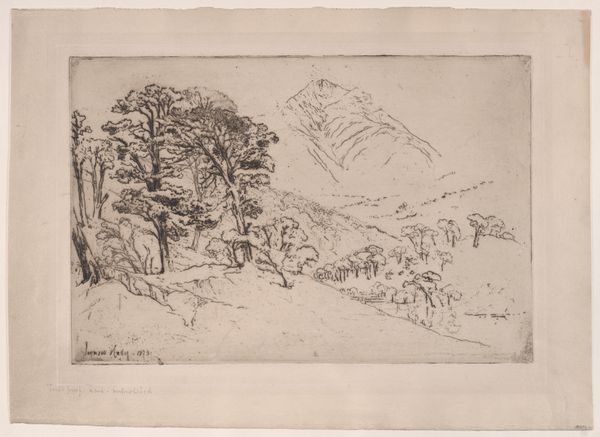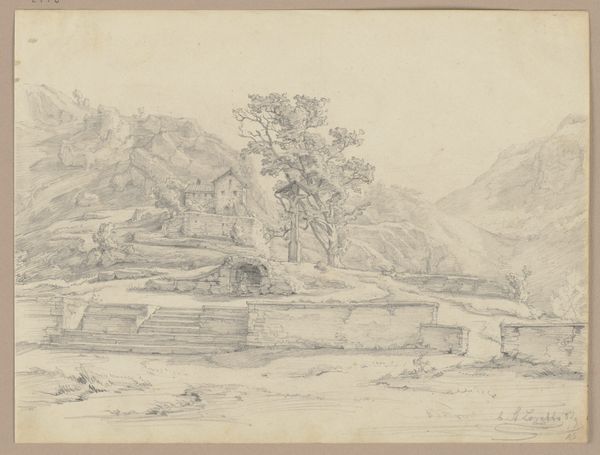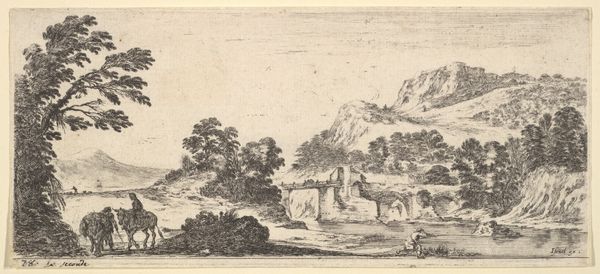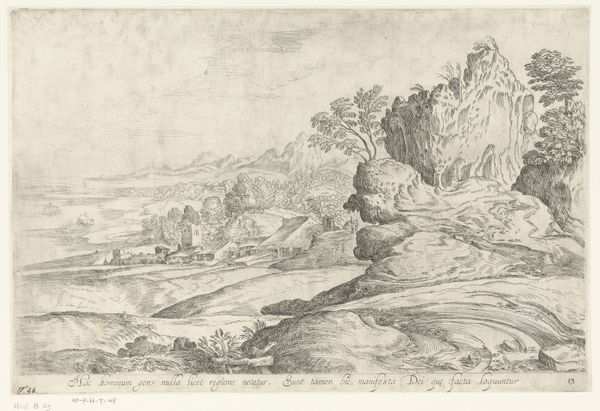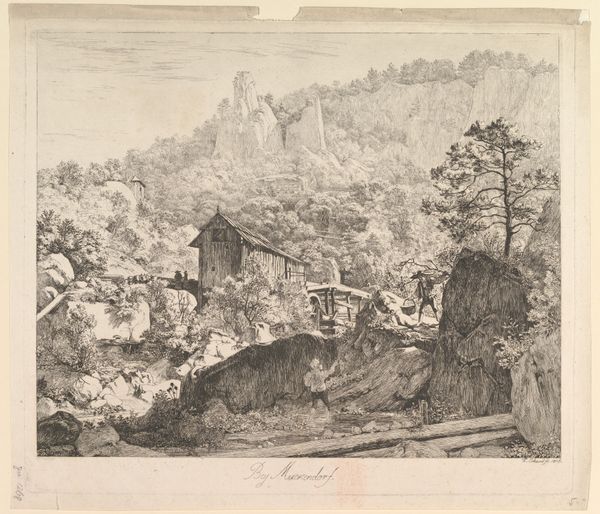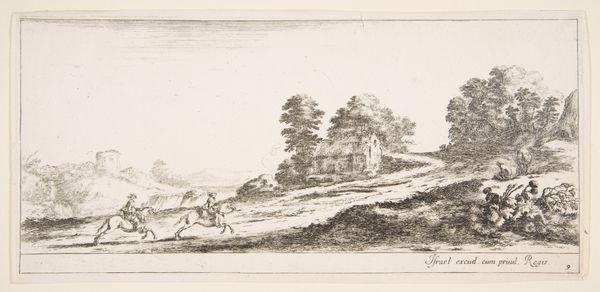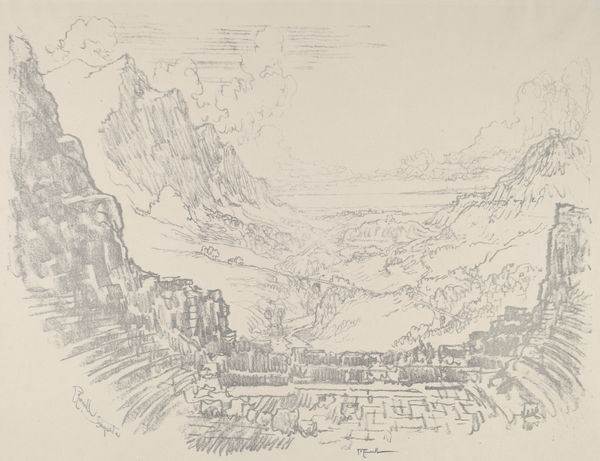
print, etching, engraving
# print
#
etching
#
landscape
#
etching
#
romanticism
#
engraving
Dimensions: 143 mm (height) x 262 mm (width) (plademaal)
Curator: This is J.P. Møller’s “Bjergparti ved Meiringen,” an etching and engraving dating to 1833. It's part of the collection at the SMK, the National Gallery of Denmark. Editor: My first impression? It’s intensely pastoral. The scene is dominated by the landscape—a cozy dwelling nestled amidst rolling hills with the majestic presence of mountains. The detail, even in this reduced palette, is exquisite. Curator: Absolutely, and that detail reflects the Romantic fascination with nature. The period valued an emotional and almost spiritual engagement with the natural world, particularly its sublime aspects, such as those suggested by the distant peaks. You can feel that in how the artist attends to every texture, right down to the blade of grass. But it’s not just the emotional engagement; there's also an idealization happening here. Editor: I see that—almost a mythologizing. The thatched roof, the distant grazing livestock... they act as potent symbols for simpler, perhaps idealized ways of life. Is Møller perhaps reflecting on ideas of nationhood tied to land? Curator: Precisely! During the rise of nationalism in the 19th century, landscapes were often mobilized to forge a sense of shared identity and belonging. The image constructs a particular narrative of rural life. The idyllic scene invites us to overlook other social realities like the actual labor involved in rural economies. Editor: The composition really draws my eye to that central cottage. With smoke coming out of the chimney, it's this really persistent signifier of home, family, and the hearth, even against the broader setting of raw nature. That little wisp of smoke seems very important. Curator: Yes, the visual vocabulary being deployed evokes ideas of permanence, continuity, and tradition, despite social and political upheavals elsewhere. There is also an implicit relationship constructed between ‘culture’ and ‘nature,’ perhaps positioning them as oppositional, yet mutually constitutive forces in defining community identity. Editor: A lot to think about packed into a black and white image of what, at first glance, seems just like a nice view! Curator: These landscapes were often much more than just pretty scenery; they played a pivotal role in constructing collective identities during a period of significant transformation and social change.
Comments
No comments
Be the first to comment and join the conversation on the ultimate creative platform.
